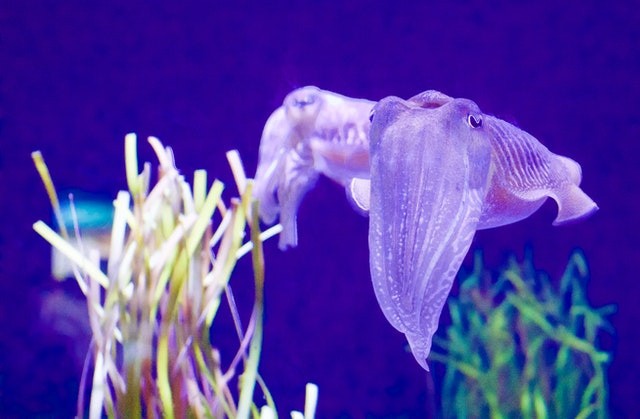Opalescent inshore squid is some of the most experienced shapeshifters on the planet. These curious cephalopods are covered in a special skin that can absolutely jingle to a kaleidoscope of colors.
Researchers have long been captivated by the remarkable disguise and communication of this squid. A new study has taken scientists even closer to finding out how they can carry out such a diverse wardrobe that enables them to hunt close to the opalescence of the shore, slip by pradators without notice, or even escape threatening suitors by flaring one of their fake testes.

The Compact Disc
Past findings have revealed the bright squid has a complicated little machine in its skin: a tiny film of collected cells with the ability to expand and contract like an accordion in order to show the entire visible span of light, from orange and red to green and yellow, to violet and blue.
These little trenches are an example of what you see on a compact disc, scientists say, showing a rainbow of colors as you bend it underneath the light. But this skin also uses something to heighten its colorful noise just like a CD.
Attempt to Genetically Engineer the Skin
When scientists made an attempt to genetically engineer the skin of these squids, they realized that something was off a little bit. The motor that tunes the trench in the skin of the squid is motivated by showing proteins, which react to various neural signals and navigate deep pigment cells.
Synthetic materials that contain reflecting proteins have revealed a shimmering look just like what is seen in squid's skin, but these synthetic materials could not shimmer or glimmer in the same way.
Something was obviously lost, and new findings in living squid and genetic engineering have illuminated light on the problem. As it appears, protein reflection can only shine bright if they are included in a pensive membrane box. This box is what encompasses the accordion-like system, and joining below, you can start to see how it operates.
Protein reflection is usually resisted by one another, but the brain of the squid's neuronal signal can go off that positive charge, enabling the proteins to knot firmly together.
When this occurs, it encourages the overlying membrane to pump water out of the cell, reducing the thickness and distancing of the grooves, which differentiate light into several colors.

Collision Between the Grooves
This collision between the grooves also inflates the concentration of reflection, which enables the light to return even brighter. However, the authors reveal, this complicated process "tunes [dynamically] the color while at the same time increase the energy of the returned light", and this reflection is what enables the bright squid to glimmer and shimmer, sometimes making use of color and sometimes without the color.
Engineers have been attempting for many years to clone the remarkable skin of the bright squid but they have not been able to get there. The recent study, which was backed by the Army Research Office of the United States, has assisted in pointing out what is going on.
For more news, updates about squids and similar topics don't forget to follow Nature World News!
© 2025 NatureWorldNews.com All rights reserved. Do not reproduce without permission.





